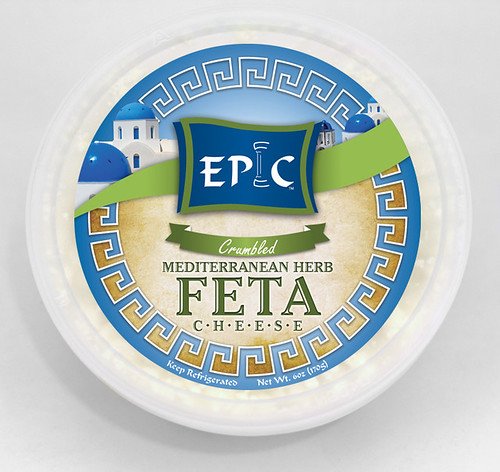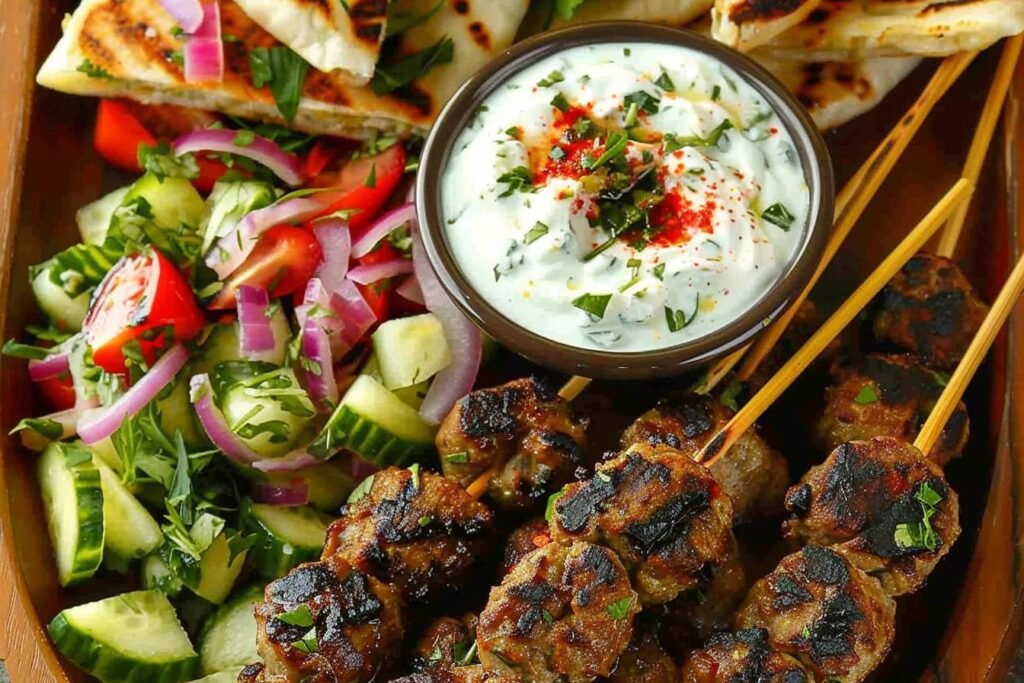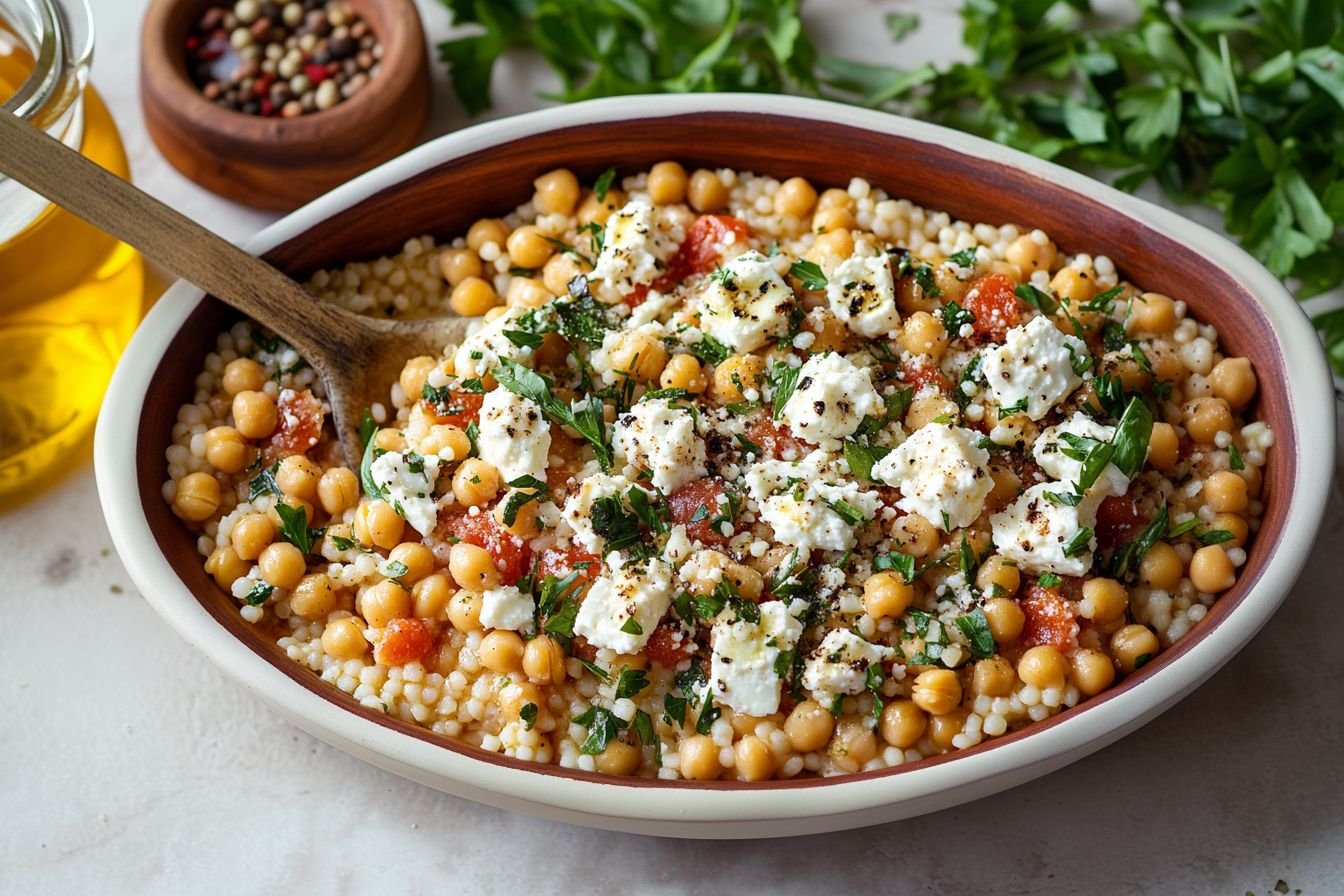When I first tried pearl couscous with creamy feta and chickpeas, I knew I had stumbled upon a satisfying dish that combines comfort and flavor effortlessly. This dish features vibrant grape tomatoes, sautéed scallions, and the rich creaminess of feta that brings it all together, making it a perfect meal for any occasion.
To create this culinary delight, gather grape tomatoes, scallions, olive oil, balsamic vinegar, garlic, kosher salt, black pepper, herbs, vegetable stock, fresh herbs, lemon zest, ground cumin, pearl couscous, chickpeas, crumbled feta, and grated Parmesan. Each ingredient plays a vital role in building layers of taste that I guarantee you’ll love.
What Is Pearl Couscous?
Pearl couscous, also known as Israeli couscous, offers a delightful twist on traditional couscous. Unlike its smaller, granular counterpart, pearl couscous features larger, round grains.
I find its texture to be chewy, which makes it a satisfying addition to various dishes. I often use it as a base for salads and sides or as a main component in recipes.
Pearl couscous is versatile and adapts well to various flavors and ingredients. I like to combine it with vegetables, herbs, and proteins for a nutritious dish.
This couscous also holds sauces well, which enhances the overall taste. Whether I’m preparing a warm dish or a chilled salad, pearl couscous never fails to impress.

Ingredients:
- 1 oz of halved grape tomatoes
- ¼ cup of sliced scallions
- 2 tbsp of extra-virgin olive oil (more for drizzling)
- 1 tbsp of balsamic vinegar (more for serving)
- 2 grated fat garlic cloves
- 1 ½ tsp of kosher salt (more if needed)
- ½ tsp of black pepper (more for serving)
- 3 sprigs of oregano, sage or rosemary
- 2 cups of vegetable stock or water
- ⅓ cup of chopped parsley, cilantro, or dill (more for serving)
- ½ tsp of finely grated lemon zest
- ¾ tsp of ground cumin
- 1 ½ cups of pearl couscous
- 1 drained and rinsed can of chickpeas (about 15 oz)
- 1 cup of crumbled feta (about 4 oz)
- ⅓ cup of freshly grated Parmesan (about 1 ½ oz)
How to make pearl couscous with creamy feta and chickpeas?
- Preheat your oven to 450°F (230°C). Toss chopped tomatoes, sliced scallions, olive oil, vinegar, minced garlic, salt, pepper, and fresh oregano in a baking dish. Roast for 15 minutes, or until the tomatoes are tender.
- While the tomatoes roast, bring chicken or vegetable stock to a boil. Season with salt to taste, then stir in chopped cilantro, lemon zest, and a pinch of cumin.
- Once the tomatoes are done, add pearl couscous, drained chickpeas, and hot stock to the baking dish. Cover tightly with foil and bake for another 20 minutes.
- Carefully remove the foil and stir in three-quarters of the creamy feta and grated Parmesan. Bake uncovered for 5 more minutes, or until the feta is melted.
- Serve the couscous in bowls, topped with the remaining feta, a sprinkle of fresh herbs, a dash of pepper, and a drizzle of olive oil and balsamic vinegar. Enjoy!
Presentation Tips
To make this pearl couscous dish visually appealing, I focus on color and texture. Start with a clean, vibrant plate. A white or light-colored plate makes the dish pop.
Garnishes can elevate the dish:
- Fresh herbs like parsley or mint add color and freshness.
- A drizzle of olive oil can add a shiny finish.
- Consider using lemon zest for a bright touch.
Serve with a wedge of lemon on the side. It offers a fresh burst of flavor when squeezed over the dish.
Adding a little crunch can enhance texture. Toasted pine nuts or slivered almonds work well for this purpose.
I like to present the feta on top in small crumbles. This practice looks good and ensures each bite has that creamy cheese flavor.
Finally, consider serving it in individual bowls for a more intimate presentation. Each guest will appreciate the care in how it’s served.
Recommended Pairings
- Salads: A refreshing cucumber and tomato salad enhances the dish’s taste. The acidity balances the creaminess of the feta well.
- Grilled vegetables: I find seasonal grilled vegetables, like zucchini and bell peppers, add a smoky flavor and vibrant color.
- Herbed yogurt: A dollop of herbed yogurt brings a tangy contrast. It’s simple to mix Greek yogurt with fresh herbs like dill or mint.
- Proteins: For added protein, I suggest grilled chicken or lamb. These options enrich the meal without overpowering it.
- Wine: A light white wine, such as Sauvignon Blanc, pairs nicely. Its crispness complements the dish’s rich textures.
- Bread: Serve with warm pita or crusty bread for dipping. This adds a fun, interactive element to your meal.
Storage Suggestions
Refrigeration: After serving, place any leftovers in an airtight container. This helps maintain flavor and texture. I usually store it in the fridge, where it lasts about 3 to 4 days.
Freezing: If I want to keep it longer, I freeze the dish. I portion it into smaller containers for easy defrosting. It’s best consumed within 2 months for optimal taste.
Thawing: When I’m ready to enjoy frozen couscous, I thaw it overnight in the fridge. Alternatively, I can use the microwave for quick thawing, using the low-power setting.
Reheating: I reheat the couscous in a pan over low heat. Adding a splash of water or olive oil helps restore creaminess. Stir occasionally to prevent sticking.
Texture Tips: Feta can become crumbly when frozen. If I’m worried about its texture, I might add fresh feta after reheating.
Common Mistakes to Avoid
- Overcooking the couscous: I make sure not to exceed the cooking time for pearl couscous. Overcooked couscous turns mushy and loses its delightful texture.
- Using too much liquid: I pay close attention to the liquid ratio. Too much water can lead to a soupy dish instead of a creamy one. A good rule is to start with 1.5 cups of water for every cup of couscous.
- Skipping seasoning: I find that overlooking seasoning can dull the flavors. A pinch of salt in the cooking water and a sprinkle of herbs before serving can elevate the dish.
- Adding feta too early: I wait until the couscous cools slightly before mixing in the feta. Adding it too early can cause it to crumble and lose its creamy consistency.
- Not rinsing chickpeas: I always rinse canned chickpeas thoroughly. This step removes excess sodium and improves the texture of the final dish.
- Ignoring fresh ingredients: I like to include fresh parsley or mint for garnish. Fresh herbs add brightness and contrast to the creaminess of the feta.
Conclusion
Making pearl couscous with creamy feta and chickpeas is a delightful culinary experience. The combination of flavors and textures creates a satisfying dish.
I love how the creamy feta adds richness, while the chickpeas provide protein and heartiness. This dish is not only delicious but can be customized easily.
This recipe works as a main dish or a side. It’s perfect for any meal and is always a crowd-pleaser.
Whether I serve it warm or cold, it delights both family and friends. I encourage you to try it and experiment with your favorite ingredients.
Just so you know, for a heartier meal you can have this pearl couscous dish to beef kofta with tzatziki.
Sounds good? Get the recipe now (by clicking the image below):

Based on NYT recipe




